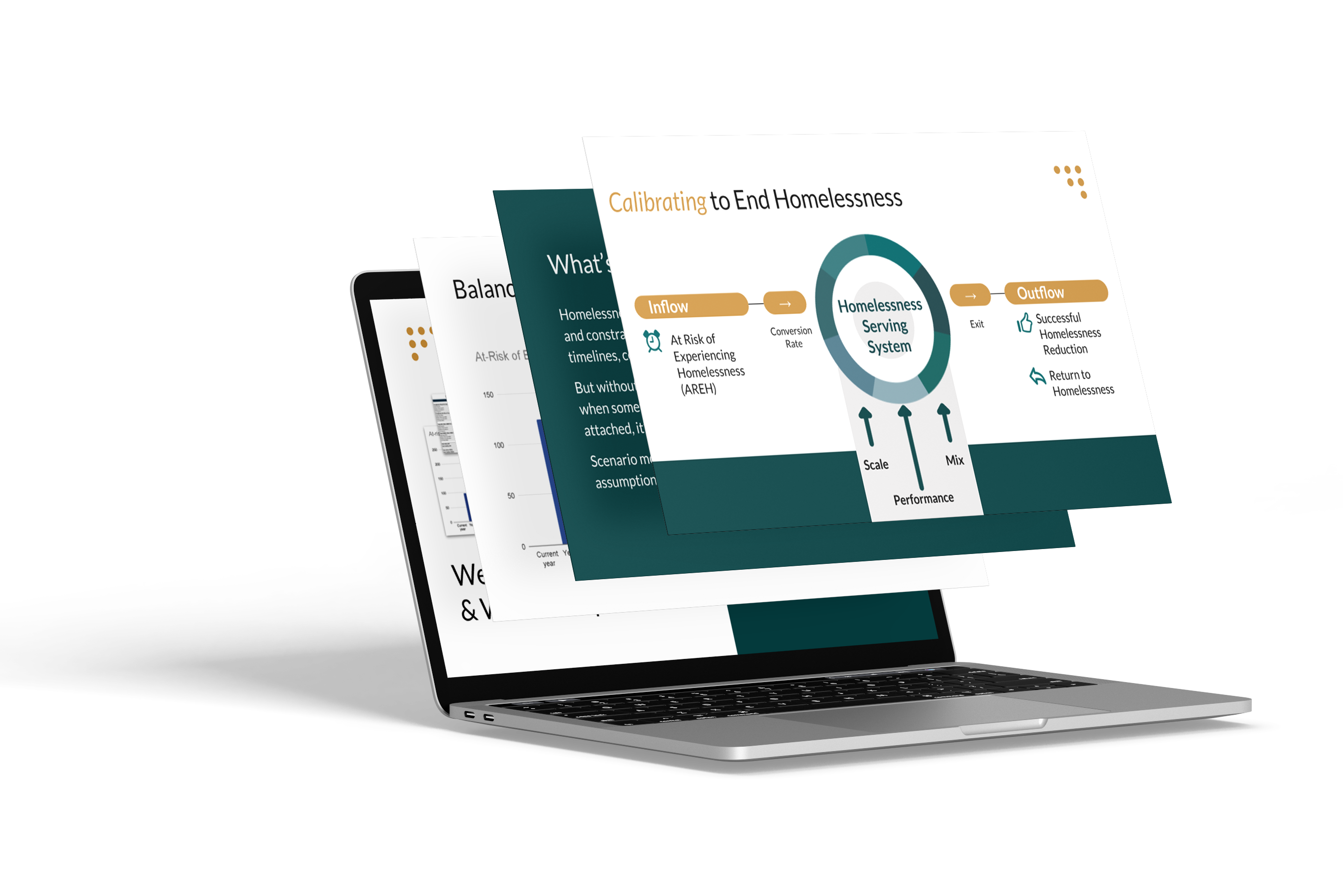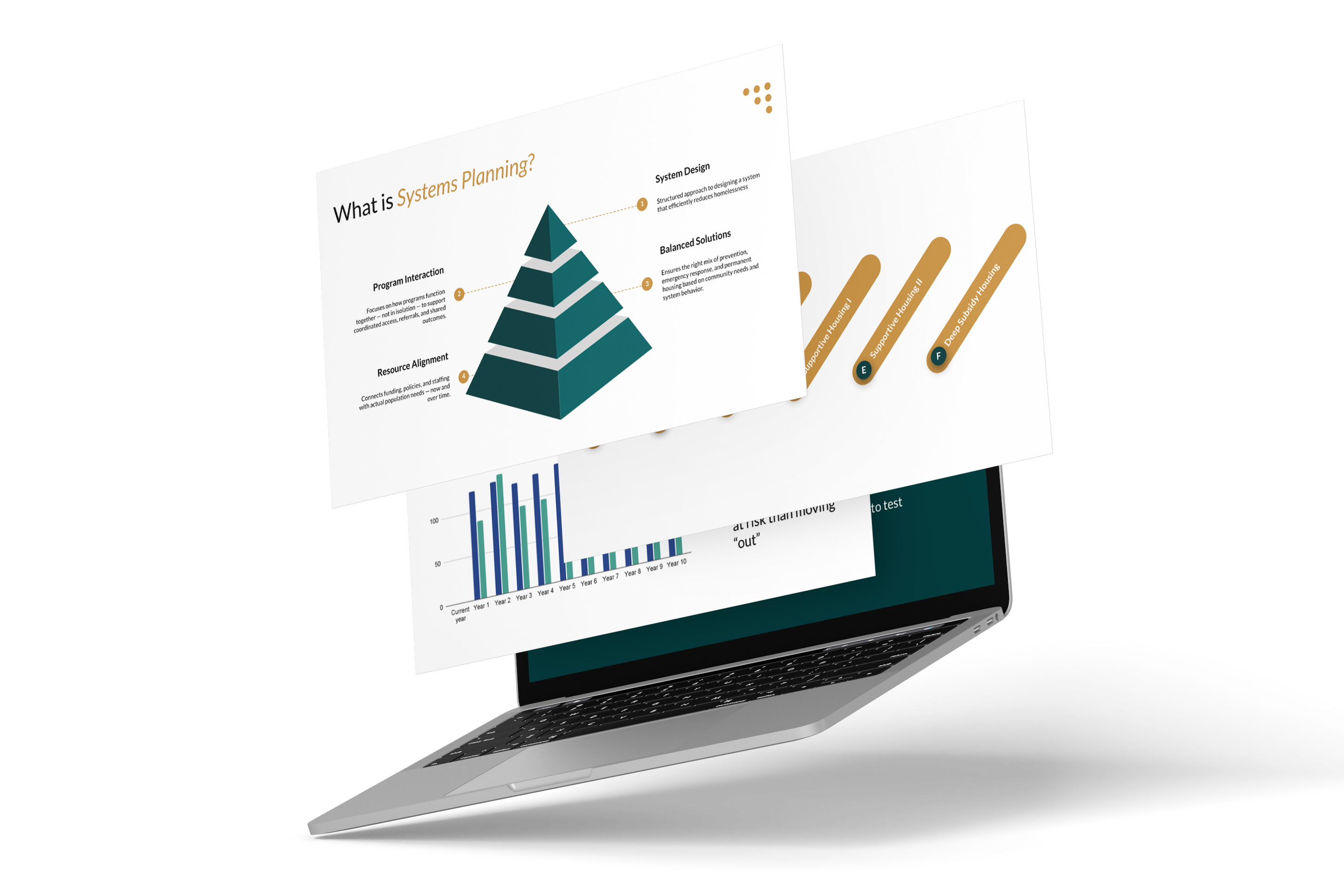Benefits of Housing & Homelessness Scenario Modelling
Confident Strategic Planning
Integrate solid evidence into your strategic plans.
Informed Investment Decisions
Support your budget and funding decisions with data.
Holistic System Design
See the “big picture” of how all parts of your housing system work together.
Diversity Matters
Plan interventions that reach those who need them most.
Accelerated Homelessness Reduction
Focus on what truly moves the needle.
Funding Prioritization
Make a compelling case for resources and use them wisely.
Key Features & Use Cases
Benefits of Housing & Homelessness Scenario Modelling
We ground the model in reliable data (e.g., homeless counts, program metrics) and proven research. Every assumption – from inflow rates to program costs – is backed by data or clear reasoning, ensuring the scenarios are credible and relevant to your community.
We design the modelling around the outcomes that matter most – like reduced homelessness, improved housing stability, and other key goals. Each scenario is evaluated by its impact on these outcomes, keeping attention on what truly counts for your community.
We consider how different demographic or vulnerable groups are affected under each scenario, helping you plan interventions that are fair and inclusive. This ensures alignment with equity commitments by identifying who benefits and where gaps remain.
We openly document all assumptions and invite your team’s input at every step. By collaborating with municipal staff, planners, and community organizations, we incorporate local knowledge and build shared understanding.
Our modelling emphasizes cost-effectiveness, showing the return on investment for various strategies. We link dollars to outcomes, so you can identify which interventions deliver the greatest impact per dollar spent.
We don’t just look at the next budget cycle; we help you simulate long-term scenarios (5, 10, even 20 years out). By anticipating how needs and outcomes evolve, you can craft plans that stand the test of time.
Why Scenario Modelling Matters
When addressing housing needs and reducing homelessness, resources are limited, the environment is constantly changing, and decisions must be made with accountability and transparency. Scenario Modelling is important because it shifts the approach from reactive to proactive. Instead of hoping a plan works, you can see how and why it might work.
This scenario-based approach allows municipal staff, housing planners, policy teams, and nonprofit leaders to make informed choices grounded in evidence. You can test ideas like expanding shelter capacity or increasing rent subsidies and immediately understand the projected impact on homelessness numbers, costs, and community outcomes.

Want to learn more? Connect with our team and watch "A Guide to Housing & Homelessness Projection Modelling" webinar recording



